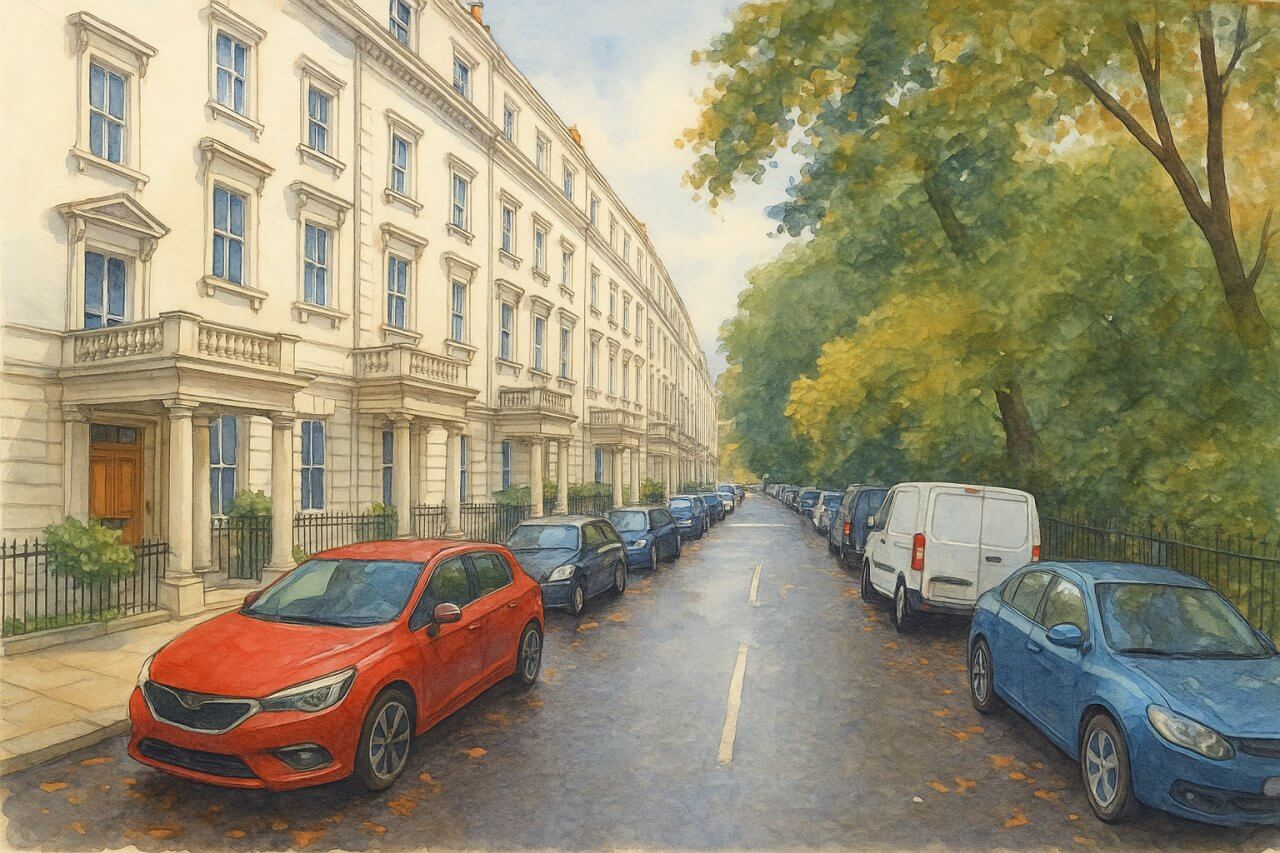
St George's Square, London
The area is part of the grand 19th-century layout designed for Pimlico, known for its elegant proportions, garden squares, and uniform stucco-fronted buildings.
Length and Layout
St George's Square is not a conventional road but a rectangular garden square enclosed by a loop of residential streets. Measuring approximately 270 metres (885 feet) from north to south and around 130 metres (426 feet) across, the square forms the centrepiece of a wider grid of Georgian-style streets.
The main vehicular access follows the perimeter of the garden, while pedestrian paths criss-cross the central park, creating a calm, landscaped space in an otherwise urban environment.
History and Development
The development of St George's Square began in the 1840s as part of Thomas Cubitt’s grand vision for Pimlico. Cubitt, the celebrated master builder behind much of Belgravia, was commissioned to extend London's residential footprint southwards. St George’s Square was among the earliest parts of Pimlico to be laid out.
The design reflected Cubitt's preference for symmetrical garden squares, surrounded by classical terraces meant to attract the Victorian middle classes. The construction continued into the 1850s, with many of the buildings dating from this time.
How It Got Its Name
St George’s Square takes its name from the patron saint of England, St George. The name was adopted in the mid-19th century, likely to invoke a sense of national pride and respectability, common in naming conventions of the era. The name was firmly established by the time the square appeared on Ordnance Survey maps in the 1850s.
Character and Atmosphere
Today, St George's Square is one of London's rare riverside garden squares. Its tranquil character is defined by a blend of residential quiet, heritage architecture, and a community-minded feel. The square is lined with:
- Victorian terraced houses
- Converted mansion blocks
- Low-rise modern flats and townhouses
The central garden, open to the public during daylight hours, adds greenery and serenity, with benches, mature trees, and lawns. It's popular with local dog walkers, young families, and professionals working nearby.
Sights and Places of Interest
While the square itself is largely residential, it is within walking distance of several key London landmarks. Notable nearby sights include:
- Tate Britain – Just a 10-minute walk north along Millbank
- The Thames Path – Running alongside Grosvenor Road, perfect for riverside walks
- Warwick Square and Eccleston Square – Other beautifully preserved garden squares
- Pimlico Gardens – A small park on the riverside, home to the statue of William Huskisson
Real Estate and Property Sizes
As of May 2025, properties in St George's Square command premium prices compared to much of outer London, though they are more affordable than nearby Belgravia or Chelsea.
Typical pricing includes:
- 1-bedroom flat: £650,000–£800,000
- 2-bedroom flat: £950,000–£1.4 million
- Full Georgian house: £2.5 million–£4.5 million
Flat sizes vary from 600–1,200 sq ft (55–110 sq m), while full houses can range from 1,800–3,000 sq ft (167–278 sq m), depending on layout and garden access. Many of the homes are now divided into flats, though some remain intact as single dwellings.
Transport Links
London Underground:
- Pimlico Station (Victoria Line) – 5-minute walk east, ideal for access to the West End and King’s Cross.
- Victoria Station (Victoria, Circle and District Lines, plus National Rail) – 12-minute walk northwest.
Nearby Bus Routes:
Several bus stops are located along Lupus Street and Belgrave Road. Key routes include:
- Bus 24 – Pimlico to Hampstead Heath
- Bus C10 – Victoria to Canada Water
- Bus 360 – Elephant & Castle to Royal Albert Hall
Fun Fact
St George’s Square is London’s only residential garden square with direct access to the River Thames. It is also unique in having both riverside and garden-facing homes, something quite rare in central London. The combination of riverside walks and leafy surroundings makes it a favourite among urban nature lovers.
Quick Facts
- Location: Pimlico, City of Westminster, London SW1
- Connected Roads: Grosvenor Road, Lupus Street, Chichester Street,
- Moreton Street, Belgrave Road
- Length: Approx. 270m x 130m loop
- First Developed: 1840s–1850s
- Named After: St George, patron saint of England
- Main Character: Quiet residential garden square with period architecture
- Nearby Sights: Tate Britain, Thames Path, Pimlico Gardens
- Real Estate Prices (May 2025): Flats from £650K+, Houses from £2.5M+
- Nearest Tube Stations: Pimlico (Victoria Line), Victoria (Victoria, Circle, District)
- Nearby Bus Routes: 24, C10, 360
- Fun Fact: Only Thames-adjacent garden square in London
Map of St George's Square, London

Painting of St George's Square, London (View image in full size)